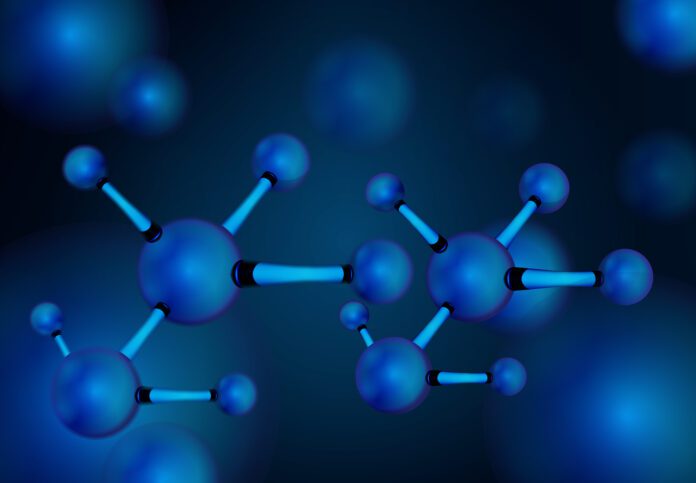Exploring the World of Nanotechnology: Unveiling Its Potential and Applications
Nanotechnology, a field of science and engineering focused on manipulating matter at the atomic and molecular scale, is revolutionizing numerous industries. Its applications span from medicine to electronics, promising groundbreaking advancements that could reshape our world. This article delves into the intricacies of nanotechnology, exploring its mechanisms, applications, and potential future impacts.
Table of Contents
Understanding Nanotechnology
Defining Nanotechnology:
Nanotechnology involves the design, production, and application of structures, devices, and systems by controlling shape and size at the nanometer scale. One nanometer (nm) is one billionth of a meter, and this scale encompasses the realm where quantum mechanical effects become significant.
Historical Background and Development:
The term “nanotechnology” was coined by physicist Richard Feynman in 1959 during his famous lecture “There’s Plenty of Room at the Bottom.” However, it wasn’t until the 1980s that the field began to develop significantly, with advances in tools like the scanning tunneling microscope allowing scientists to observe and manipulate matter at the nanoscale.
Key Concepts in Nanotechnology
1. Nanoscale Phenomena:
At the nanoscale, materials exhibit unique properties compared to their bulk counterparts. For instance, gold nanoparticles appear red or purple rather than gold and exhibit enhanced catalytic properties. This is due to quantum effects and increased surface area-to-volume ratios.
2. Nanomaterials:
Nanomaterials are substances with structural components smaller than 100 nanometers. They can be classified into several types:
- Nanoparticles: Tiny particles with dimensions in the nanometer range. Example: carbon nanotubes.
- Nanowires and Nanotubes: Structures with high length-to-diameter ratios. Example: silicon nanowires.
- Nanosheets: Thin layers of material with thickness in the nanometer range. Example: graphene.
3. Fabrication Techniques:
Nanotechnology employs various fabrication techniques to create nanomaterials:
- Top-Down Lithography: Techniques like photolithography and electron beam lithography are used to carve out nanoscale patterns from larger materials.
- Bottom-Up Synthesis: Processes like chemical vapor deposition and self-assembly build nanostructures from atoms or molecules.
Applications of Nanotechnology
1. Medicine and Healthcare:
Nanotechnology is poised to revolutionize medicine through targeted drug delivery, advanced imaging techniques, and novel treatments.
- Drug Delivery Systems: Nanoparticles can be engineered to deliver drugs specifically to diseased cells, reducing side effects and improving efficacy. Example: liposomes and dendrimers.
- Diagnostic Tools: Nanotechnology enhances imaging techniques, such as MRI and PET scans, providing more detailed images of biological processes.
- Therapeutics: Nanomedicines are being developed to treat conditions such as cancer, where nanoparticles can deliver chemotherapy directly to tumor cells.
2. Electronics and Computing:
Nanotechnology is driving advancements in electronics by enabling the creation of smaller, faster, and more efficient devices.
- Semiconductors: Nanoscale transistors and memory devices offer improved performance and lower power consumption compared to traditional components.
- Quantum Dots: These semiconductor nanoparticles are used in displays and imaging technologies, providing brighter colors and higher resolutions.
3. Energy and Environment:
Nanotechnology contributes to energy efficiency and environmental protection through innovations in energy storage, generation, and pollution control.
- Energy Storage: Nanomaterials enhance the performance of batteries and supercapacitors, leading to longer-lasting and more efficient energy storage solutions.
- Renewable Energy: Nanotechnology is used to improve solar cells and fuel cells, making renewable energy sources more viable.
- Environmental Remediation: Nanoparticles can be used to clean up pollutants from soil and water through processes like adsorption and catalytic degradation.
4. Manufacturing and Materials:
Nanotechnology enhances the properties of materials, leading to innovations in manufacturing and product design.
- Nanocomposites: Incorporating nanoparticles into materials can improve their strength, flexibility, and thermal stability. Example: carbon nanotube-reinforced polymers.
- Self-Cleaning Surfaces: Nanotechnology enables the development of surfaces that repel dirt and bacteria, reducing maintenance and improving hygiene.
Related: Nanotechnology is the study and manipulation of individual atoms and molecules
Challenges and Ethical Considerations
1. Safety and Health Risks:
The small size of nanoparticles can pose health and environmental risks, such as inhalation or ingestion of toxic particles. Comprehensive studies are required to assess their long-term effects on human health and the environment.
2. Regulatory and Ethical Issues:
Regulating nanotechnology involves ensuring that new products are safe and effective. Ethical considerations include the potential for misuse or unintended consequences of nanotechnology applications.
3. Public Perception and Awareness:
Public understanding of nanotechnology is crucial for its acceptance. Educating people about the benefits and risks associated with nanotechnology can foster informed discussions and decisions.
Future Outlook of Nanotechnology
1. Emerging Trends:
The future of nanotechnology includes advancements in areas such as nanorobotics, smart materials, and advanced nanomedicines. Research is ongoing to explore new applications and refine existing technologies.
2. Integration with Other Technologies:
Nanotechnology will increasingly intersect with other fields, such as artificial intelligence and biotechnology, leading to novel innovations and interdisciplinary solutions.
3. Global Impact:
Nanotechnology has the potential to address global challenges, such as disease treatment, energy sustainability, and environmental protection. International collaboration and investment are essential to realizing its full potential.
See More: Top Latest Technology In Web Development
Table: Key Areas of Nanotechnology Applications
| Application Area | Example | Impact |
|---|---|---|
| Medicine and Healthcare | Targeted drug delivery, nanomedicines | Improved treatment efficacy and reduced side effects |
| Electronics and Computing | Nanoscale transistors, quantum dots | Enhanced performance and miniaturization of devices |
| Energy and Environment | Nanocomposites, renewable energy technologies | Increased efficiency and environmental benefits |
| Manufacturing and Materials | Self-cleaning surfaces, advanced materials | Improved durability and functionality of products |
This comprehensive exploration of nanotechnology illustrates its transformative potential across various sectors. By understanding its fundamental principles, applications, and challenges, one can appreciate the vast opportunities and responsibilities associated with this rapidly advancing field.

